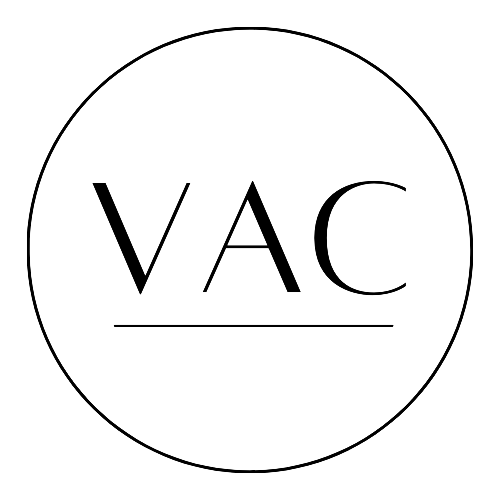Xiaohan Jiang: Nostalgic Connections
Drawing inspiration from memories of the past and visions of imagination, contemporary artist Xiaohan Jiang paints the nostalgic bonds between her homeland’s landscapes and nature; through her personal experiences, she explores the pursuit of faith and self-redemption against the backdrop of East Asian cultural and political contexts.
How did your creative journey begin?
Growing up in the countryside with my grandparents shaped my deep connection to nature. I began writing poetry at the age of four to document my life. Poetry largely influenced my imagination and perception. In times of rebellion and confusion, my mother gifted me a book by the German poet Rainer Maria Rilke. His poems provided me with an escape from reality. His praises and hopes for nature and miracles were a guiding light when I felt lost. Poetry served as an emotional outlet and a form of redemption for me. While writing poetry, I gradually began weaving images that resonated with my words. I felt compelled to capture these images in colorful ways, which marked the beginning of my journey with painting.
Where do you find inspiration for your work?
I draw inspiration from memories of the past and visions of imagination, painting the nostalgic connections between the landscapes of my homeland and nature. Biblical references also play a vital role in this realm, as the narratives of redemption and rebirth mirror my struggle to navigate conflicting dual identities. The power of poetry and faith has helped me shape a wondrous spiritual world.
How has your work evolved over the last few years?
Over the past few years, my journey as a painter has been a dynamic exploration of technique and expression. Initially, I delved into the gestural dynamism and rhythm of using oil sticks, embracing a sense of looseness that integrates drawing into my painting process. The direct contact between hand and material allowed me to grasp the temperature and volume of the medium, often employing my hands to smear or flick paint onto the canvas. In terms of expression, I transitioned from solely painting landscapes to incorporating figures within landscapes, aiming to depict a deeper narrative through the interaction between humans and nature. This endeavor enriches the obscurity of poetry and the presence of faith within the composition.
What does a typical day in the studio look like for you, and how has your art practice grown or changed?
I usually wear comfortable and loose-fitting clothes to the studio. Firstly, I tidy up and clean the studio. I do a lot of drawing with pencil or watercolor, and on Yupo paper, I paint some small, colorful sketches with oil paint. Sometimes, I listen to emotional songs; other times, I listen to podcasts where my mom tells stories from the Bible while I paint. Over the past few years, my attitude toward painting has changed a lot. Whether it's the preparation before painting, exploring painting materials, or the logical thinking in painting, I have become more rigorous.
Which experiences have impacted your work as an artist?
It was the time I spent in the countryside during my childhood. Surrounded only by nature, the natural world back then seemed more real and pure than it now, devoid of any impurities. During those years, I helped my grandfather plant colorful irises and jujube trees, feeling the fresh spring breeze in the backyard. In the summer, my friends and I made mud pies for imaginary mice and caught fireflies to use as night lights. As autumn approached, my grandma and I would ride bikes to admire the golden-green wheat fields in the morning, picking wild fruits on our way home. Winter brought snowmen building in the yard, ice skating on the small pond in the valley, and adventurous hikes up perilous trails.
At the tender age of four, I began writing poems, documenting the wonders of nature I observed—snowflakes, rain, rivers, and trees. Perhaps due to the absence of parental companionship during my formative years, I poured my emotions into the mountains, wheat fields, and birds. Whenever I gazed at the distant ridge connecting the earth to form a skyline, I felt the embrace of my parents' love. During those times, I realized the boundless love Mother Nature bestows upon us. These memories have been etched deeply in my mind and continue to influence me to this day profoundly. I believe in the power of nature and the surprises and sense of security it brought me during my childhood.
How has social media impacted your work?
Social media has had a profound influence on my work as a painter. It has served as a platform to exhibit my art to a broad audience, enabling me to connect with individuals from across the globe. This visibility has not only facilitated recognition of my work but also fostered a growing following and facilitated direct sales to collectors. In 2022, a curator from Beirut discovered my work through social media, leading to my first solo exhibition, "Lowland Delusion," at Août Gallery that year.
As a poet and a painter, which comes to you first: your images or your words?
As a poet and painter, I know the creative process can vary. Sometimes, vivid images spark the initial inspiration, igniting a cascade of words that seek to capture and convey the essence of those visuals. Other times, the evocative power of language sets the stage, conjuring emotions and narratives that ultimately manifest in a painted form. For example, a single line of poetry can inspire the entire mood of a painting. I might let an evocative phrase guide the color scheme or composition, allowing the poem’s essence to permeate the artwork. It’s not about replicating the textual imagery but capturing its spirit, translating the rhythm and tone into brushstrokes and hues.
Instagram: @____mooner____
Website: www.xiaohanjiang.com/







